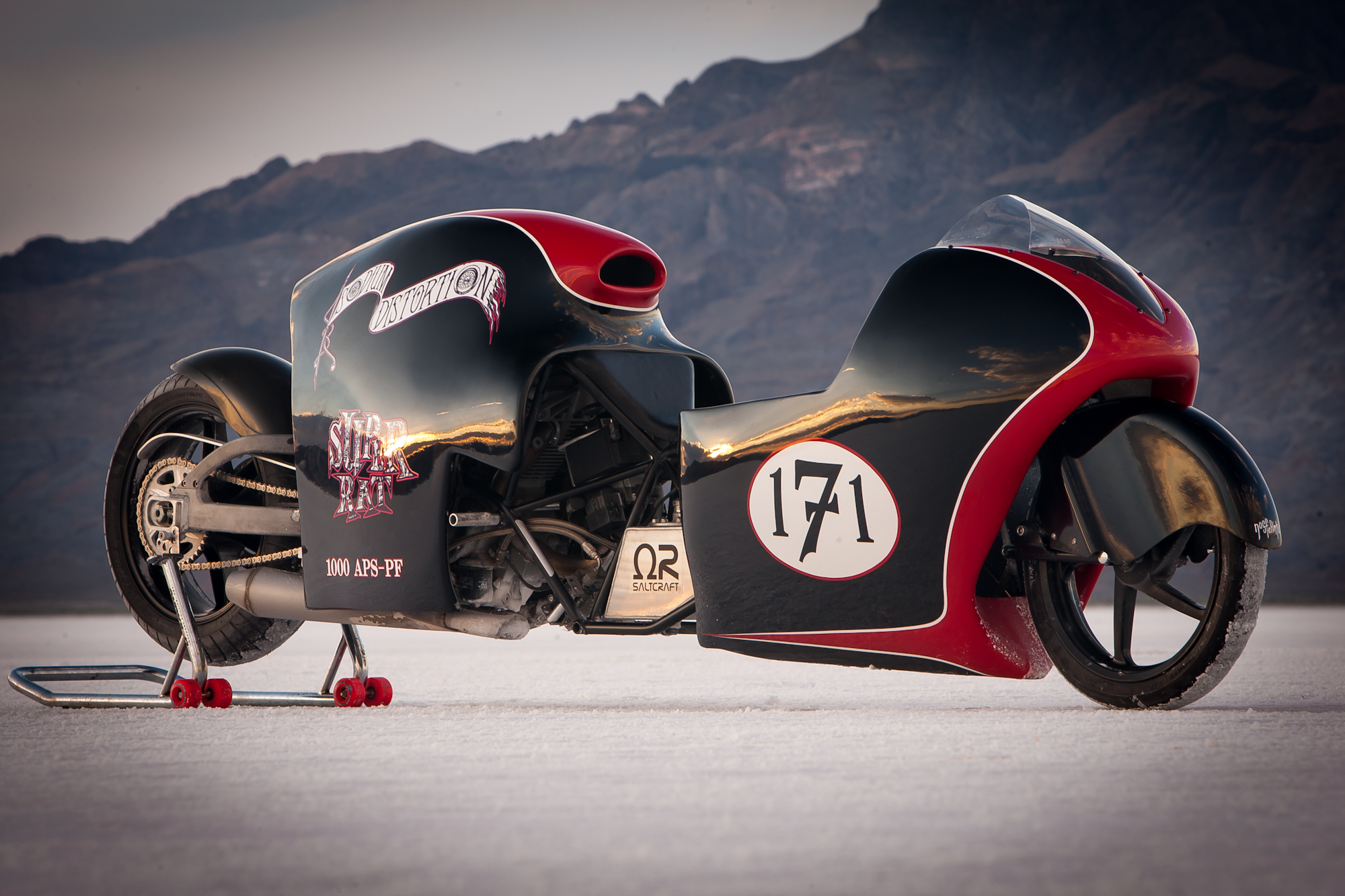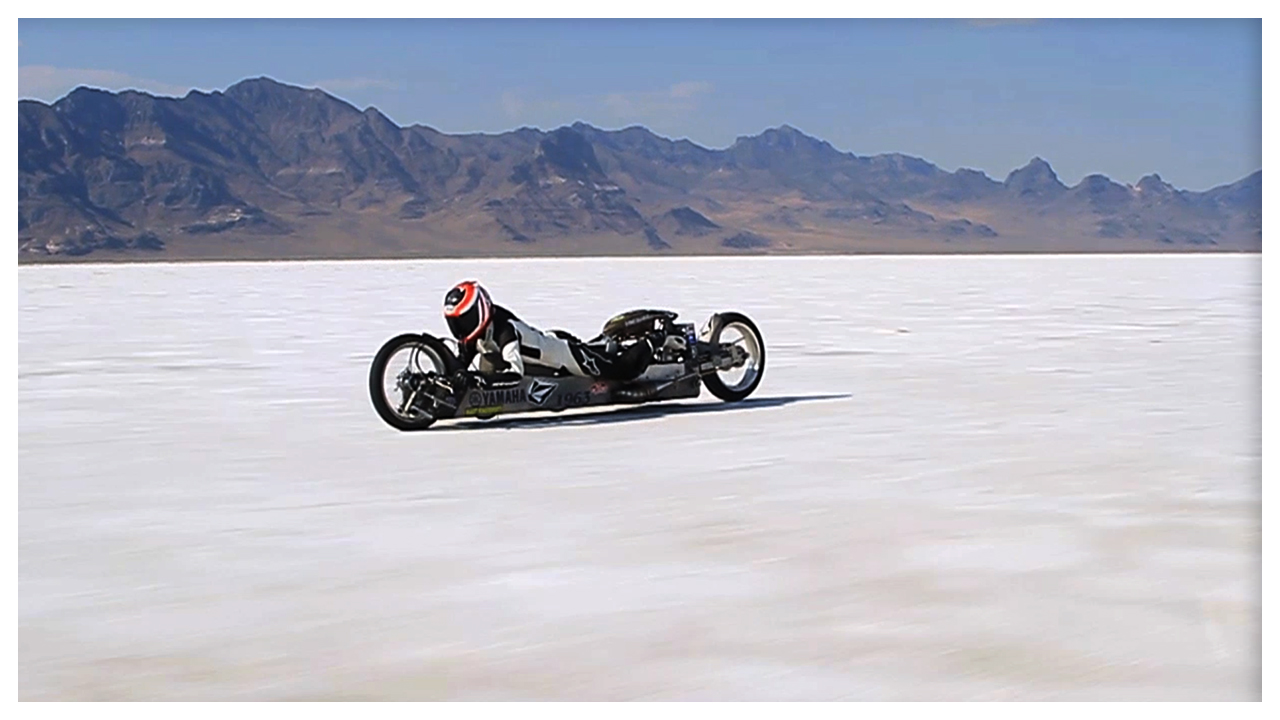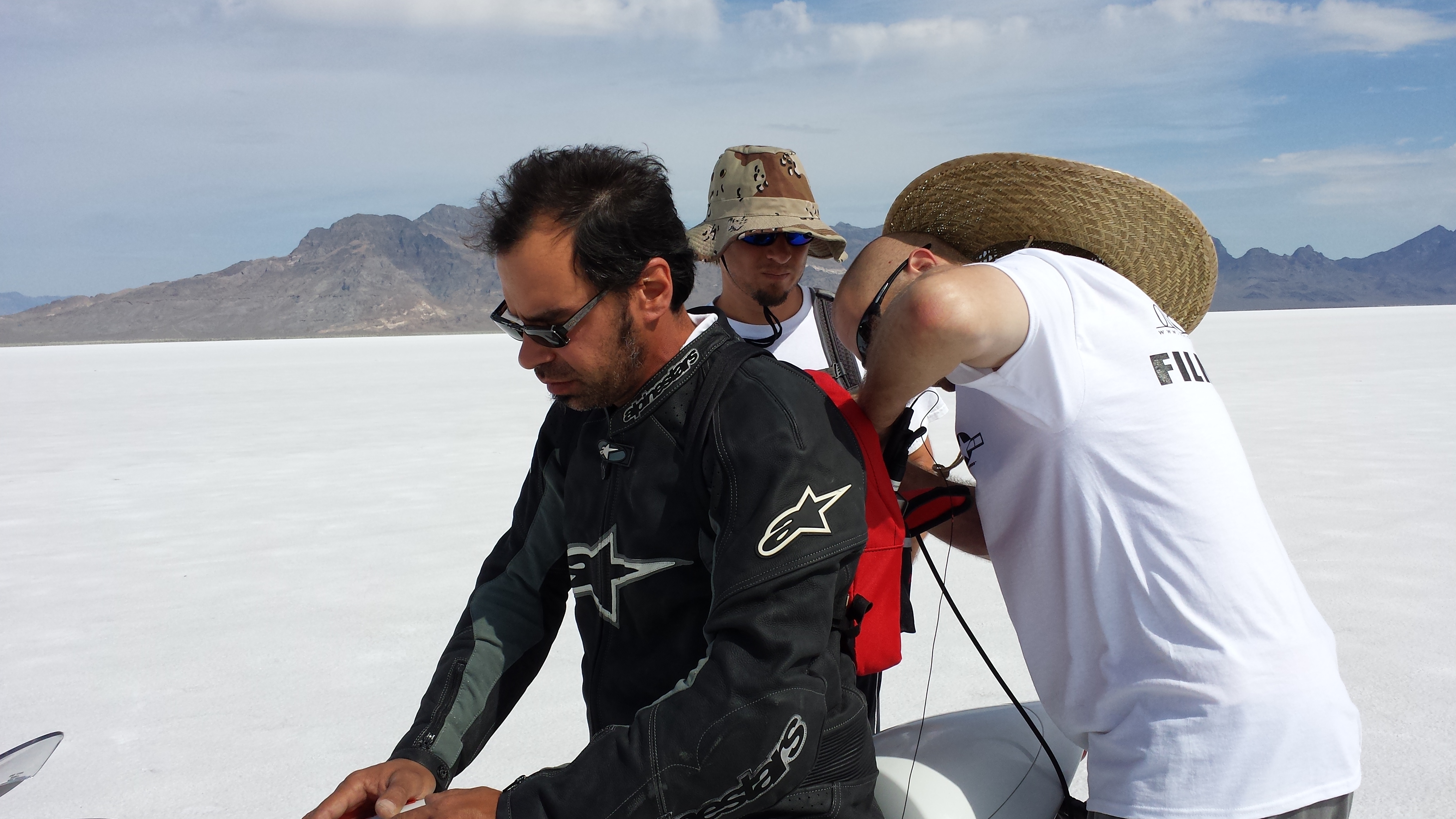
Guest Contribution by James Bretz
The documentary Out of Nothing is my first feature, and the first feature for our entire P-51 Pictures team. It’s more than just a story about motorcycles. It’s a human story. It follows four men who follow their passions and dreams, and it tells one of many stories that are a part of a larger community of individuals and teams involved in motorcycle land speed racing.
When looking over the footage that Director Chad DeRosa had shot over the course of two years, one word came to mind. Scope. It was Chad’s and Producer Andrew Lahmann’s goal that the film should look and feel large. We wanted Out of Nothing to be experienced as more of an action/drama narrative than an informative style of documentary
When discussing the initial ideas of how to use sound in OON, I knew the sounds of the guys working in their shops would be important. I also wanted to focus on the atmosphere and environment of what it’s like to be at Bonneville and on the salt flats during a land speed racing event. Those would include the sound of being around the hotel, where they’re relaxed and having a good time, and inside the pits, where they are fixing and doing modifications on their motorcycles over the course of the week. Most important was the motorcycles themselves. I knew I would need both on and off-board sounds to help sell the speed of these machines, and support some of the more intense sequences that were planned to be put together.
Since I had never recorded on-board sounds of vehicles before, I knew I had to do some research. I first went back to an article I had read before I became a part of the project. It was here on DesigningSound.org that I read about Colin Hart’s Yamaha R1 recording. Also, thanks to his generosity of offering the sounds for free, I was able to complete the first trailer having no motorcycle sounds of my own. Second was a Post article on Ren Klyce and his work for Girl with the Dragon Tattoo. He recorded a custom Honda 350 and 450 for that film.
The most important source of information came to me from Tim Prebble. As a team, our crew studied a few different films and documentaries to learn what they had done to tell their stories. One of our favorites, and biggest influences was World’s Fastest Indian. Tim was nice enough to share his experiences working on that film and answered a few (many) of my questions. He also directed me to more articles and blogs, one of which was a blog by Rene Coronado. A great read in general, it was influential enough, that I even bought one of the microphones he used to record his Honda VTX1300.
Thanks to a successful Kickstarter campaign, the whole P-51 crew went down to Bonneville, Utah in August of 2013. I brought a Countryman B6, a Line CM3, an SM57 and a Sound Devices 722 to record the on-board sounds of the motorcycles. I tried to focus on three specific parts of the bike when I could. The exhaust, the motor, and on the air intake.
Our first day we learned how unpredictable Mother Nature can be on the salt flats. Not only did we get chased off the salt our first day, but we lost the last day of racing thanks to being chased off again early the previous day. So much time was lost that I didn’t even get to record ‘Yamahaz’, a lay down bike with two YZ85 motors on it.

Recording the motorcycles on the salt flats was rather nerve racking. The biggest advantages are its immense size and its almost perfect flatness. We were able to record pass after pass without breaking any speed laws, or noise ordinances. Otherwise, it was either extremely hot, or extremely windy. Wind’s not a problem for recording on-board, until the bikes reach apx. 80-100mph however. But it can be a safety concern for the riders. On the day we were recording the motorcycle that would take the place of ‘Nosferatu’ in the film, Jason Omar was going 135mph with a strong cross-wind. So much so that he had to lean into the wind (at approx. a 20 degree angle I was told) in order to stay upright. It was pretty brave of him, and he actually seemed pretty exhilarated by it, but it still got too windy to continue safely. So we called that session short.
The heat was the worst on the first day (same day we got chased off by a rain/wind storm). We were recording ‘The Duc’. A custom 1000cc Ducati. This was also my first time EVER recording on-board, and of course I have way more people around me then is really necessary. Like I mentioned before, safety is an important factor. I had the riders wear a backpack with the 722 inside it, then ran the cables to the microphones taped to the bike. I made sure to never put a mic or cable on the same side as the drive train. If for any reason the gaffers tape failed, you didn’t want a cable getting caught in the chain or a sprocket. Also when taping the cables to the bikes I had to make sure there was just enough slack for the rider to have freedom to move. Luckily their range of motion isn’t large, but it was a balance to make sure there wasn’t so much slack that the cables could get caught on anything, or that the rider would move so much to pull the cables off. All of this I consulted with each rider beforehand. Each bike was unique enough that it required some extra thought before we started recording.

As strong as gaffers tape is, its failure was one of my bigger concerns. I had no idea how it would hold up with the friction and 150mph wind pulling at the slack in the cables. Vibration of the 722 was another concern. I disarmed the HD and recorded strait to flash drive, and just to be extra safe I put some medium density foam designed for lawn chairs in the backpack as well. As the week went on making sure to find time to capture some of the bikes got tough. Both ‘Yamahaz’ and ‘Godspeed’ were having mechanical issues. I managed to get one pass of ‘Godspeed’ at the end of a day in exchange for staying late to help Bill Woods flush his engine out after the process.
When reviewing all the on-board sounds I captured I figured about 20-25% was actually useful. By that percentage you might call the sessions a failure, but based on what’s on screen it was a success.

With lack of funding I wasn’t able to work on the film full time as was originally planned. I had from March to our deadline date of May 17th. I realized the overall approach to the sound design of the documentary had to change. In talking with Chad and Andy we prioritized sequences in the film that deserved the most attention. Number one was the opening/title sequence, we knew if we could hook our audience at that moment, we could get away with doing a bit less later on. Second was the climax, a race sequence which we had to make going in a straight line feel exhilarating. Luckily enough I was given a rough edit of this sequence in late 2013 so I was able start experimenting with it. I had intended to redesign that sequence. In the end it became the foundation for me to build its many layers on.
After completing the three other race sequences, there was a lot of dialogue cleanup and editing to be done. Some of Chad’s first interviews were shot using only the mic on a 7D camera. In those cases it helped adding extra ambience sounds to mask the cleanup artifacts. In the end I did manage to play around with a few other parts, and get creative with a couple transitions between segments.
With the limited amount of time, it was disappointing not be able bring a lot of the ideas I had and that were discussed prior to the start of post to full fruition. In the end, though I feel it was quite an achievement for my first time working on a large scale project. It forced me to become creative in a different manner than just editing and designing, but with workflow, prioritization, and execution in a time sensitive situation. You never want to settle with ‘good enough’, yet sometimes you have no choice but to keep pushing on no matter what’s against you. Bill Woods has a line in the film “You have a team of guys that you depend on and that you need to be successful”. That line was the reason I said yes to this project, and when it comes to our P-51 team, it couldn’t be truer.
James Bretz has been studying and working in sound for the past four years with P-51 pictures and other independent film makers in Bellingham WA. He continues working in a part-time capacity. He can be found at his website, www.audditysound.com.
Out of Nothing is currently submitted to numerous film festivals and has been an Official Selection at Southampton International Film Festival, All Sports Los Angeles Film Festival, and is also the Main Feature of the PDX Film Festival in Portland, Oregon. It has been awarded Best Directed Documentary for Chad DeRosa at Southampton. At All Sports LA it was awarded both Peoples Choice and 2nd Place for Best Documentary.
Great job.
I loved this film. I recently saw it on an Air Asia flight from Malaysia to Australia. I would love to buy a copy of the DVD. Where can I find it?